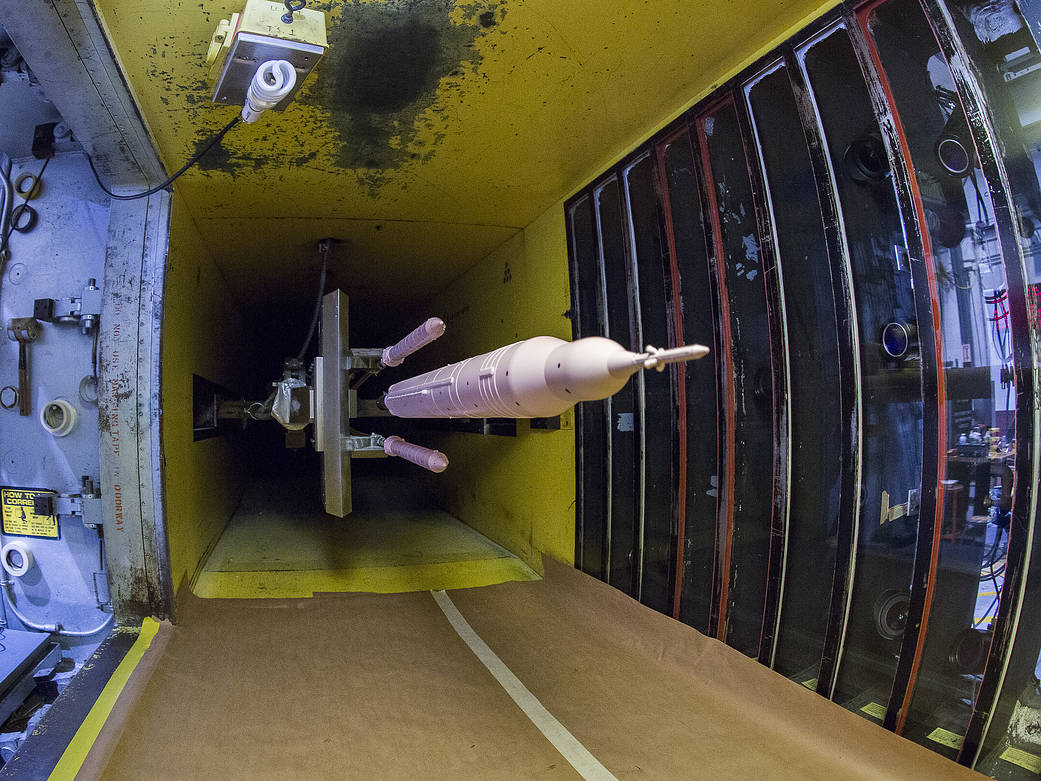Image credit: NASA/David C. Bowman
Lift off at the end of the countdown is just the first phase in a launch. Two minutes in, booster separation occurs – a critical stage in flight, with little room for error. Engineers at NASA’s Langley Research Center in Hampton, Virginia, are doing their part to support NASA’s new deep space rocket, the Space Launch System, or SLS. The rocket will be capable of sending the Orion crew vehicle and other large cargos on bold new missions beyond Earth orbit. To understand the aerodynamic forces as booster separation motors fire and push the solid rocket boosters away from the rocket’s core, Langley engineers are testing a 35-inch SLS model in Block 1B 105-metric ton evolved configuration in the Unitary Plan Wind Tunnel using a distinct pink paint. The pressure-sensitive paint works by reacting with oxygen to fluoresce at differing intensities, which is captured by cameras in the wind tunnel. Researchers use that data to determine the airflow over the model and which areas are seeing the highest pressure.




























